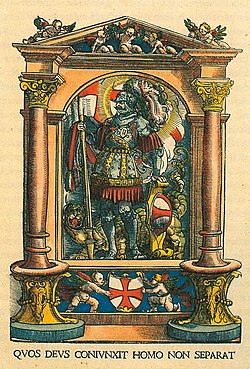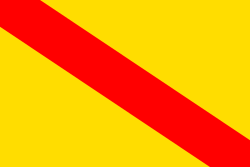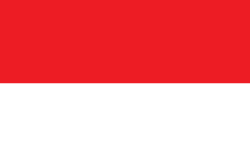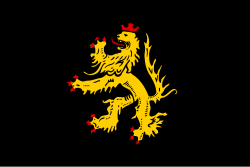Švábský spolek
| Schwäbischer Bund | |
|---|---|
| Účast na švábské válce, rytířské válce a německé selské válce | |
vlajka | |
 znak | |
| Základní info | |
| Aktivní | 1488–1534 |
| Vznik jako | Švábský městský spolek |
| Transformace | |
| Operační území | |
| Síla | až 13 000 |
| Spojenci | |
| Oponenti | |
| Konflikty/boje | švábská válka válka o bavorské dědictví francká válka povstání rytířů německá selská válka |
Švábský spolek, svaz nebo také liga (německy Schwäbischer Bund, Bund im Lande Schwaben) byla středověká obranná vojenská aliance říšských stavů ve Svaté říši římské. Uskupení zahrnovalo svobodná říšská města, preláty, říšská knížectví a říšské rytířstvo – a to zejména území původního raně středověkého Švábského vévodství, které zaniklo v roce 1313. Švábský spolek byl založen v Esslingenu roku 14. února 1488 Fridrichem III. Habsburským a zanikl 2. února 1534 v důsledku postupující reformace.
Seznam členů

 Přední Rakousy a Tyrolsko – Zikmund Habsburský, arcivévoda Předních Rakous a hrabě tyrolský, na jeho místo nastoupil Maxmilián I. v roce 1490
Přední Rakousy a Tyrolsko – Zikmund Habsburský, arcivévoda Předních Rakous a hrabě tyrolský, na jeho místo nastoupil Maxmilián I. v roce 1490 Württembersko – württemberský hrabě Eberhard I. (povýšen na vévodu v roce 1495), nástupce vévoda Eberhard II. od roku 1496
Württembersko – württemberský hrabě Eberhard I. (povýšen na vévodu v roce 1495), nástupce vévoda Eberhard II. od roku 1496
Do roku 1489 se přidala další říšská knížata:
 Augsburské knížecí biskupství – augsburský kníže-biskup Fridrich II. Hohenzollernský
Augsburské knížecí biskupství – augsburský kníže-biskup Fridrich II. Hohenzollernský Bádensko – bádenský markrabě Kryštof I.
Bádensko – bádenský markrabě Kryštof I. Braniborsko-ansbašské markrabství – braniborsko-ansbašský markrabě Jiří Fridrich z Hohenzollernu
Braniborsko-ansbašské markrabství – braniborsko-ansbašský markrabě Jiří Fridrich z Hohenzollernu Braniborsko-baroutské markrabství – braniborsko-bayreuthský markrabě Zikmund z Hohenzollernu
Braniborsko-baroutské markrabství – braniborsko-bayreuthský markrabě Zikmund z Hohenzollernu Mohučské kurfiřtství – mohučský arcibiskup Bertold Hennebersko-Römhildský, kurfiřt
Mohučské kurfiřtství – mohučský arcibiskup Bertold Hennebersko-Römhildský, kurfiřt Trevírské kurfiřtství – trevírský arcibiskup a kurfiřt Jan II. Bádenský
Trevírské kurfiřtství – trevírský arcibiskup a kurfiřt Jan II. Bádenský
Po roce 1500 se spolek rozšířil o dřívějšího protivníka:
 Bavorsko-mnichovské vévodství – bavorsko-mnichovský vévoda Albrecht IV. Moudrý, od roku 1503 vévoda sjednoceného Bavorska.
Bavorsko-mnichovské vévodství – bavorsko-mnichovský vévoda Albrecht IV. Moudrý, od roku 1503 vévoda sjednoceného Bavorska.
V roce 1512 vystoupilo Bádensko a Württembersko, novými členy se stali:
 Bamberské knížecí biskupství
Bamberské knížecí biskupství Eichstättské knížecí biskupství
Eichstättské knížecí biskupství Hesensko – hesenský lankrabě Filip I. v roce 1519
Hesensko – hesenský lankrabě Filip I. v roce 1519 Rýnská Falc – rýnský falckrabě Ludvík V. Wittelsbach, kurfiřt
Rýnská Falc – rýnský falckrabě Ludvík V. Wittelsbach, kurfiřt Falcko-neuburské vévodství – neurburská falckrabata Ota Jindřich a Filip Wittelsbach
Falcko-neuburské vévodství – neurburská falckrabata Ota Jindřich a Filip Wittelsbach Würzburské knížecí biskupství – würzburský kníže-biskup Konrád II. z Thüngenu v roce 1523
Würzburské knížecí biskupství – würzburský kníže-biskup Konrád II. z Thüngenu v roce 1523 Salcburské knížecí arcibiskupství – salcburský kníže-arcibiskup Matyáš Lang z Wellenburgu, v roce 1525.
Salcburské knížecí arcibiskupství – salcburský kníže-arcibiskup Matyáš Lang z Wellenburgu, v roce 1525.
Členy bylo také 26 svobodných říšských měst původního městského spolku:
|
|
Související články
Externí odkazy
 Obrázky, zvuky či videa k tématu Švábský spolek na Wikimedia Commons
Obrázky, zvuky či videa k tématu Švábský spolek na Wikimedia Commons
Média použitá na této stránce
Banner of the Arms of the House of Hohenzollern
Autor: Nomadic1, Licence: CC BY-SA 4.0
Coat of arms of the Roman Catholic Diocese of Würzburg
Coat of arms of Isny
Coat of Arms of the Bishopric of Augsburg
Autor: Dbachmann, Licence: CC BY-SA 3.0
Early form of the Swiss flag, used as a field sign by troops under confederate command from ca. the 1470s. This was replaced by various flammé designs during the 17th century, but this older design was taken as the basis for the modern flag of 1815.
Drawn after the earliest depiction of the field sign, in the Lucerne Chronicle of 1513, in the scene showing the battle of Nancy (1477), see File:Deutsche Geschichte5-290.jpg.
A triangular version of the flag saw slightly earlier use, possibly from the 1420s, see File:Ch-1422a.png, and File:St. Jakob Tschachtlan.jpg for a 1470 depiction of the triangular flag in a scene of 1444.Coat of arms of the German city of Schwäbisch Gmünd, Baden-Württemberg.
Wappenschild des Schwäbischen Bundes, 1522
Heiliger Georg mit Fahne. Zwei Putten halten das Wappen, ein rotes Kreuz in weißem Feld
Das Motto: Wen Gott verbunden, trennt der Mensch nicht
Kolorierter Holzschnitt
Werkstatt Hans Burgkmairs
eingescannt aus: Horst Carl: Der Schwäbische Bund 1488–1534. Landfrieden und Genossenschaft im Übergang von Spätmittelalter zur Reformation. Leinfelden-Echterdingen, 2000; ISDN 3-87181-424-5. S. 453Autor: User:Sodacan, wheel from File:Coat of Arms of Ernest August, Duke of Brunswick-Lüneburg (1661-1692).svg, Licence: CC BY-SA 3.0
Banner of the Arms of the Electorate of Mainz
Autor: Sir Iain, eagle by N3MO, Licence: CC BY-SA 3.0
Banner of the Holy Roman Empire, with the combined Arms of Austria and Burgundy. Used during the reign of Maximilian I and Charles V.
Wappen von Aalen
Coat of arms of Bamberg
Autor: Nomadic1, Licence: CC BY-SA 4.0
Coat of arms of the Roman Catholic Diocese of Eichstätt
Coat of arms of Reutlingen
Banner of the Arms of Baden in 3:2 proportion.
Wappen der Grossen Kreisstadt Wangen im Allgäu im Landkreis Ravensburg, Baden-Württemberg, Deutschland. Unter rotem Schildhaupt, darin drei linksgewendete bartlose silberne Männerköpfe (Wangen) nebeneinander, gespalten; vorne in Silber ein halber, rot bewehrter und rot bezungter schwarzer Adler am Spalt, hinten in Silber eine blaue Lilie.
La couleu de la Nouormandie
Arms of the Swabian League. Two putti support a red Cross pattée in a white field.
Coat of arms of Biberach/Riss
Wappen der Großen Kreisstadt Ravensburg im Landkreis Ravensburg, Baden-Württemberg, Deutschland
Red_St_George's_Cross
Used by Archbishopric-Electorate of Trier 898–1794 (Erzbistum Trier)
Banner of the Arms of the Duchy of Württemberg.
Coat of arms of Nördlingen
Autor: Basileus1389, Licence: CC BY 4.0
The flag was used as a banner by the German peasants who fought against the feudal system present in the Holy Roman Empire of the XVI. century.
It shows a rainbow, intended to refer to the covenant God made between Noah and Himself (see Genesis 9:1-17). Below the rainbow, there is a line of Latin text saying "verbum domini maneat in etternum" (="verbvm Domini maneat in aeternvm"), which means "The word of the LORD stays eternally", signaling the eternal validity of the covenant God made between Noah and Himself.
Underneath the line in Latin, there are two lines of German text saying "die ist das zeichen des ewigen bundes gotes" (="die ist das Zeichen des ewigen Bundes Gottes"), which means "It is the sign of the eternal covenant of God", describing the meaning of the rainbow.Banner of Bavaria-Munich
Coat of arms of the town of Weil der Stadt. Blazon: Per pale, gules a bend sinister azure bearing letters SPQR and gules two keys in saltire or, in chief or an eagle displayed sable armed gules.
Flag of Austria (1230–1934). Still in use today.
Dieses Wappen des Schwäbischen Kreises zeigt oben die drei Löwen des Herzogtums Schwaben, unten das Kreuz des Hochstifts Konstanz.
Coat of arms of the Prince-Bishopric of Augsburg. Blazon: Per pale gules and argent.



















































